Reducing vegetation on your property—or on a larger scale to protect a subdivision or community—can dramatically decrease the spread and intensity of wildfire and increase the chances for firefighters to control the fire. Help stop or slow down the spread of wildfire by thinning, trimming trees and removing ladder fuels including immature trees, shrubs and dead or downed branches which can carry a fire into the tops of trees. Below are different types of fuels treatments for fire management. See our pamphlet on Vegetation Management in the Wildland Urban Interface or read below for more information.
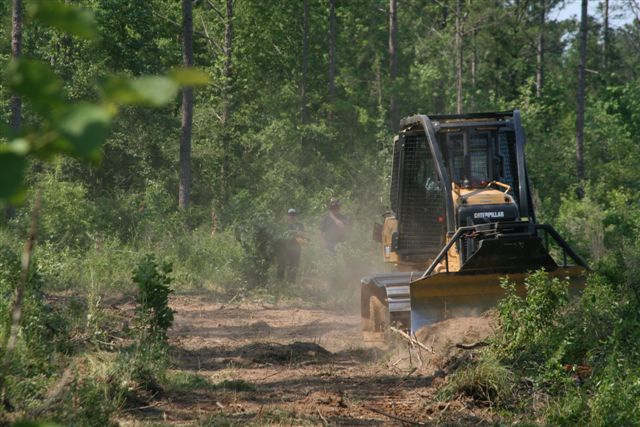
+ Fuel Breaks & Fire Breaks
A fuel break is the thinning of vegetation, or fuels, over a specific area of land. They are most commonly used to surround a community and slow the spread of a wildfire. By decreasing the amount of vegetation the fire has to travel through, you are significantly reducing the risk of extreme fire behavior. A fire break is a break in vegetation. In some cases it may be a gravel road, a river or a clearing made by a bulldozer. A ‘green’ fire break uses grasses with high moisture content, such as winter rye or winter wheat to provide a break in the continuity of the fuel. If wide enough, a fire break will stop the spread of direct flame. However, embers can still be lofted into the air and travel across the line. | 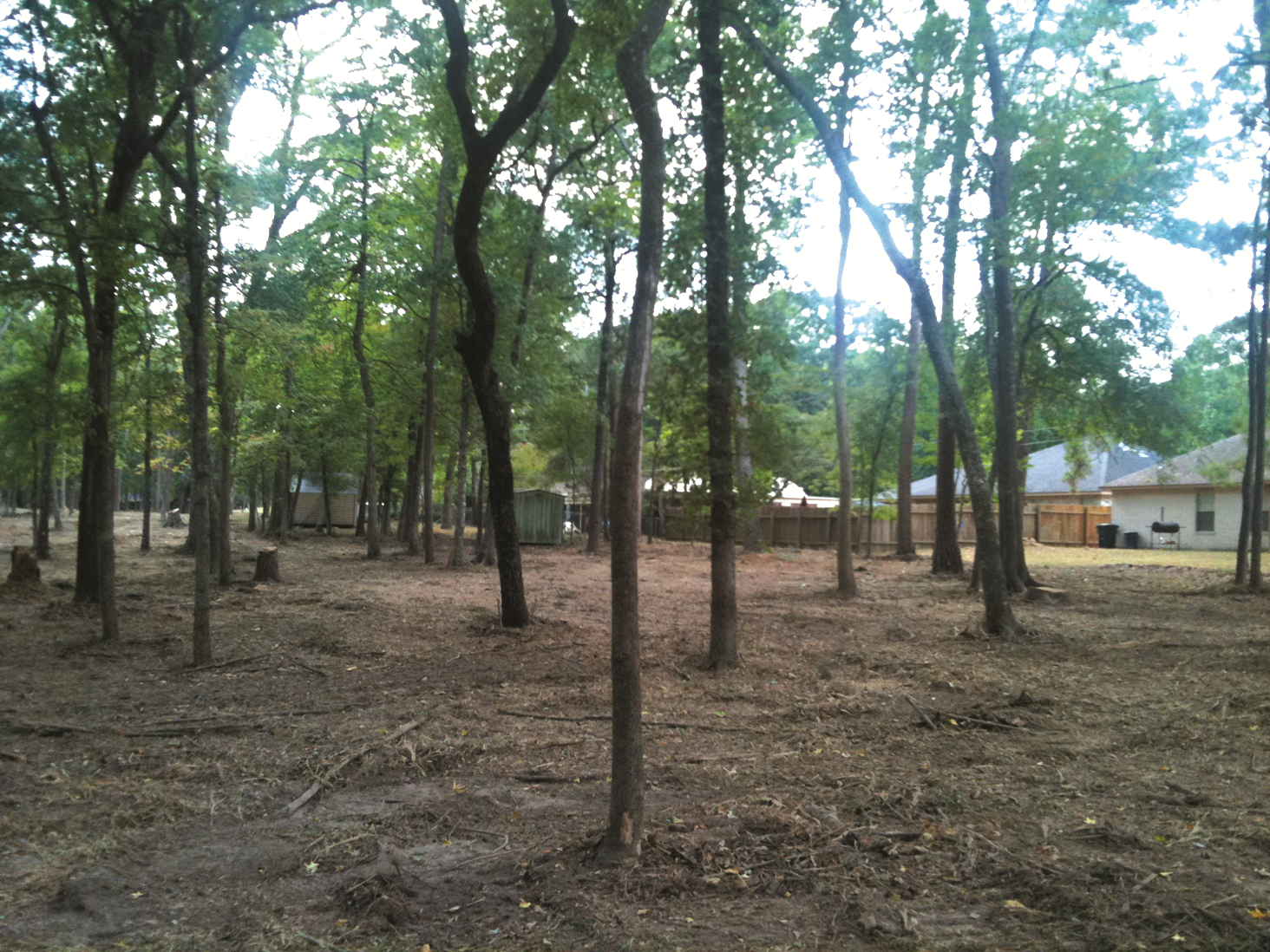 |
+ Mechanical Treatments
A mechanical treatment removes fuels by cutting shrubs, small trees and ladder fuels that make up the understory of a forested area. Materials are either taken from the site or chipped into smaller pieces. Fuels are selected for removal based on how they would contribute to a wildfire. For example, a thick patch of cedar could readily ignite and release significant heat and embers. This fuel type contributes to the rapid spread of a wildfire and would need to be removed. The objective of mechanical treatment is to reduce the intensity of wildfire. If there is less fuel to burn the fire stays low to the ground giving firefighters a safer condition in which to work | 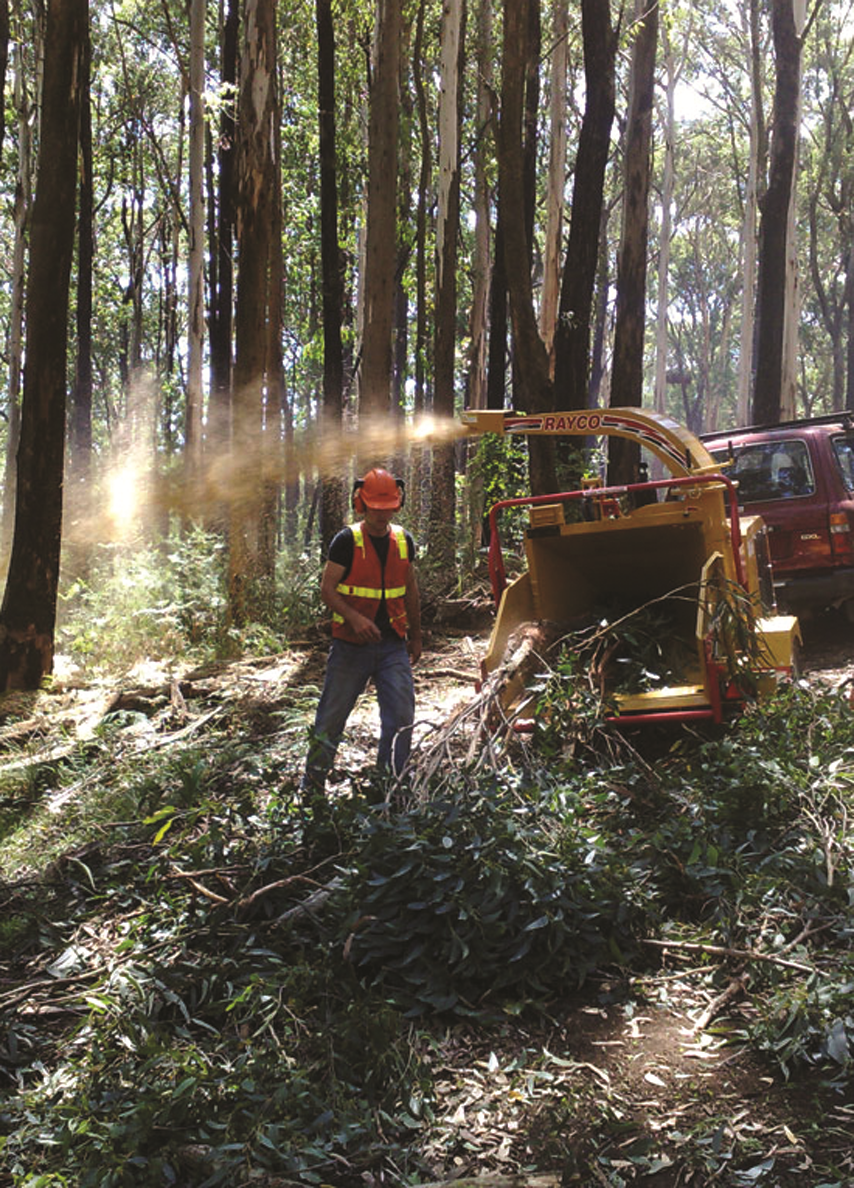 |
+ Mulching
A mulching operation is intended to break fuels into smaller pieces and spread them within the fuel break. While the smaller pieces will still carry fire, they will significantly reduce the intensity of it. The goal is to reduce ladder fuels like tall brush that could carry a ground fire into the top of a tree. Mulching equipment is classified as either traditional mowers or mulchers that grind the material. Heavy duty mowers are useful when fuels are small enough to be pushed over. However, for sites with an established woody mid-story, or ladder fuels, other equipment may be needed. | 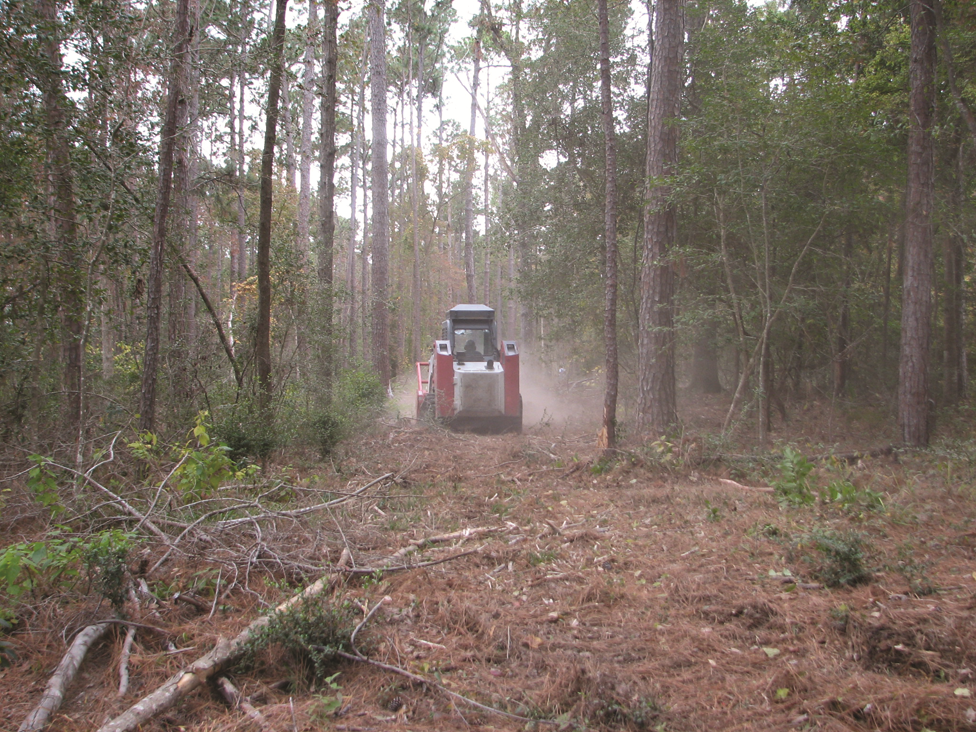 |
+ Herbicide Treatment
Herbicides are used to control invasive species of plants that will “take over” an area. Invasive plant species can also be reduced with mechanical thinning. The effectiveness of herbicide treatments depend on existing vegetation, topography and other local restrictions. Thick underbrush may require mechanical treatments prior to the use of herbicides. | 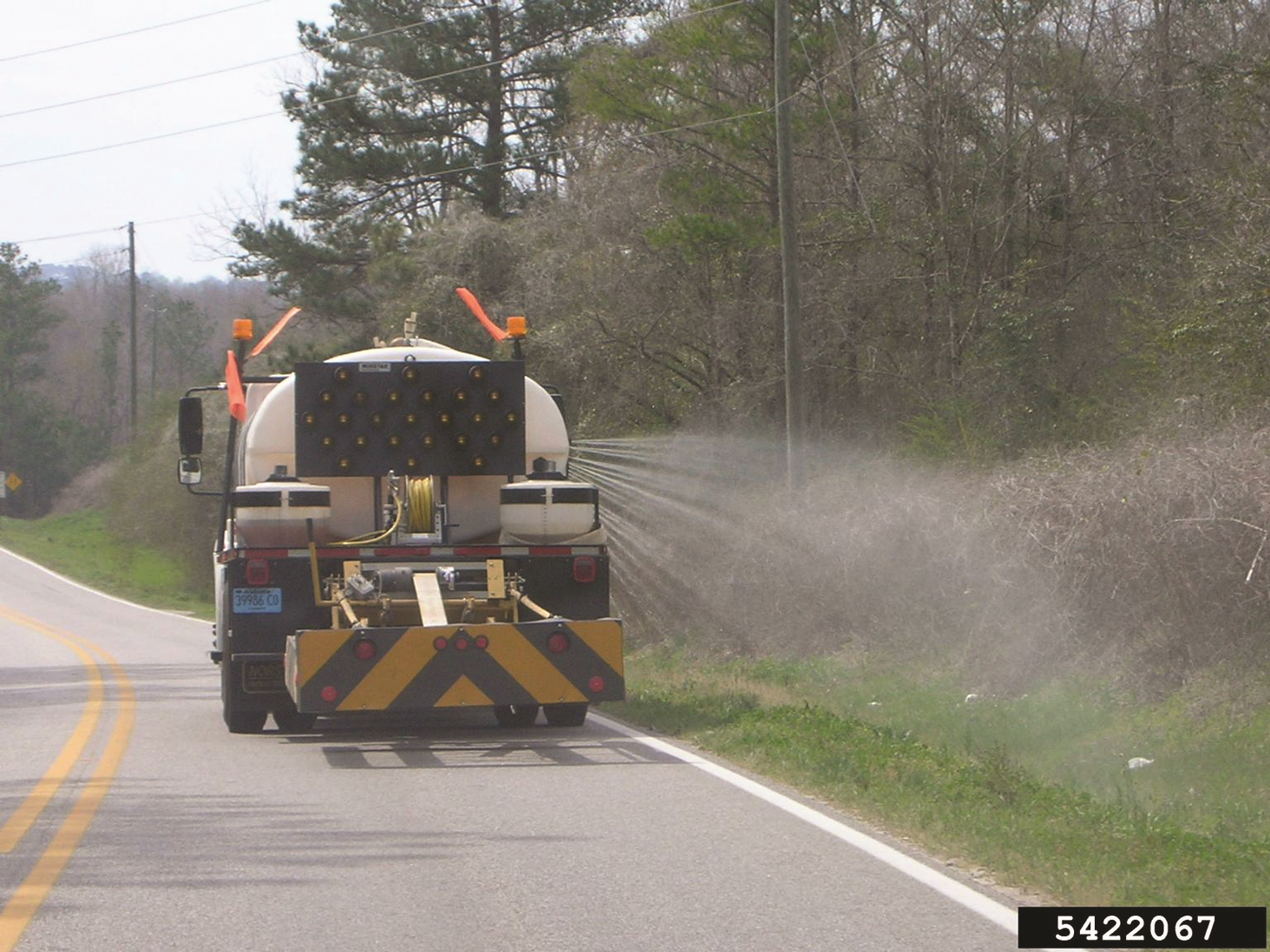 |
+ Grazing
Removing fuels by grazing relies on the consumption of plants by animals.
Across the state, various livestock are used in this way. | 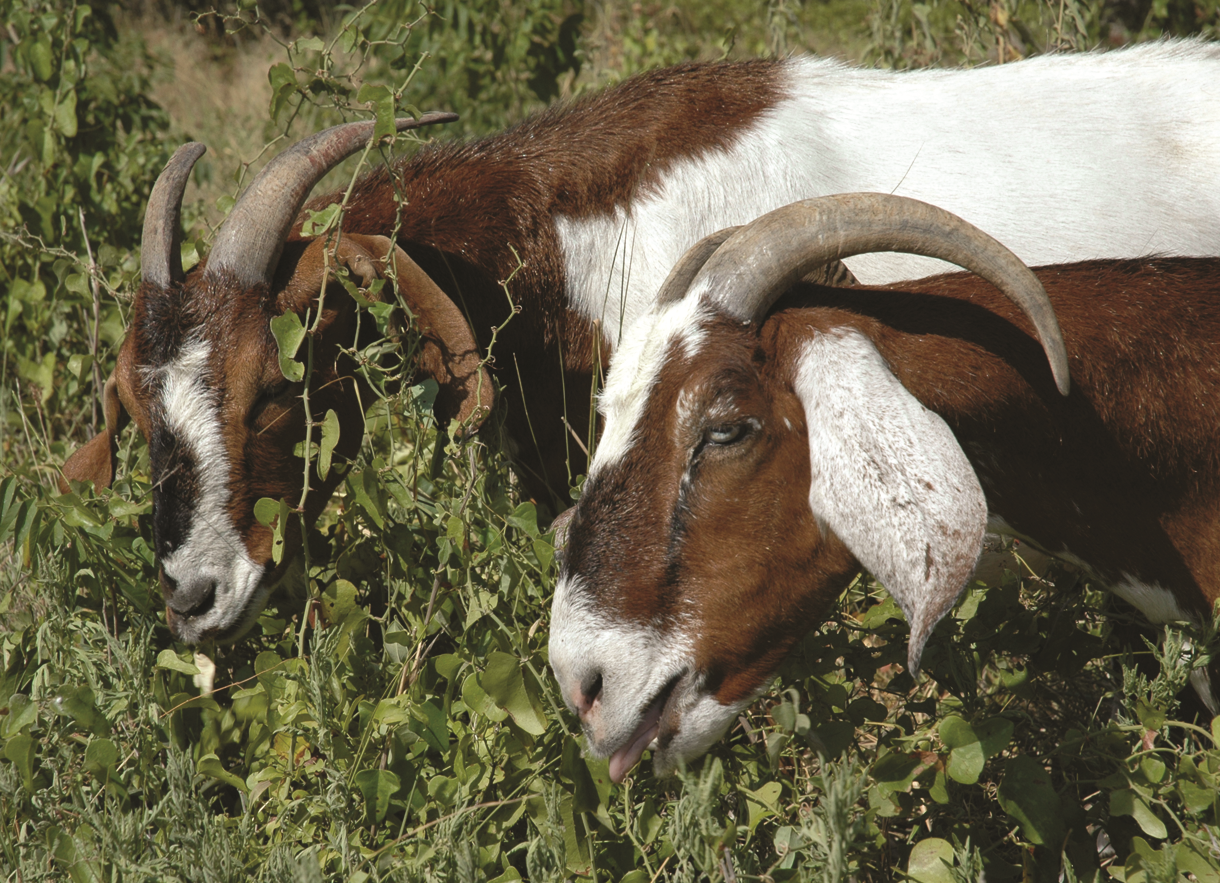 |
+ Prescribed Burning
Prescribed or controlled, burning is the most commonly used tool for managing hazardous fuel buildups because of its relatively low cost per acre. Prescribed fire improves natural habitats and reduces heavy fuels.
It is important to use a certified prescribe burn manager to improve fire safety and reduce smoke management issues. | 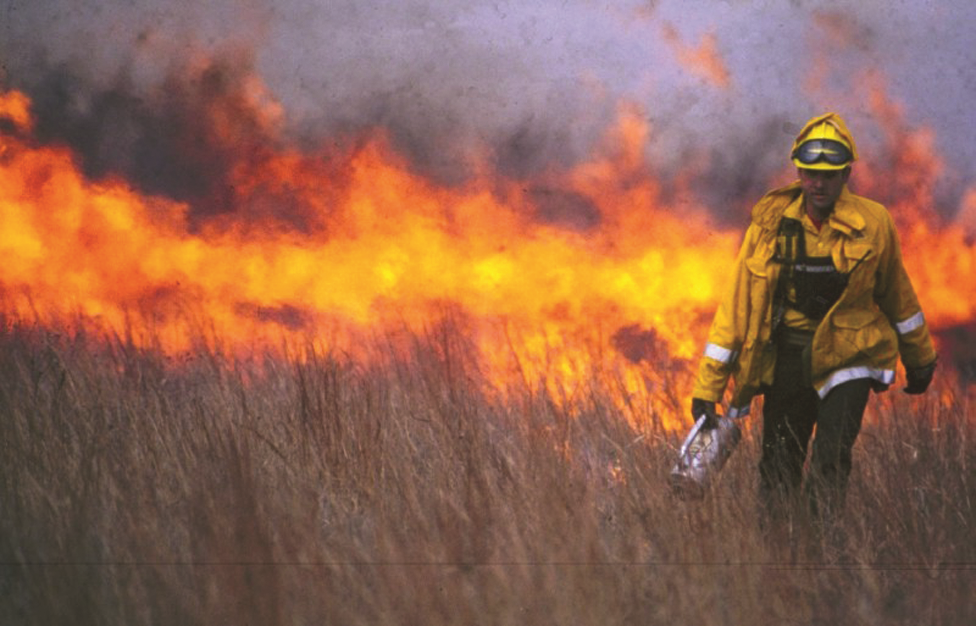 |
+ Creating a Fuel Break
Fuel breaks are most effective when placed along a natural fire break like a road. Choosing a site along a road also allows easy access for equipment. Follow these helpful tips when creating a fuel break: - Follow a natural fire break or contour lines
- Prune large trees to 10 feet from ground
- Remove ladder fuels such as tall brush and small trees
- Thin trees to create a crown spacing of 25 to 30 feet
- Break up thick areas of brush
- Maintain a minimum width of 60 feet on flat land and 100 feet on slopes
| 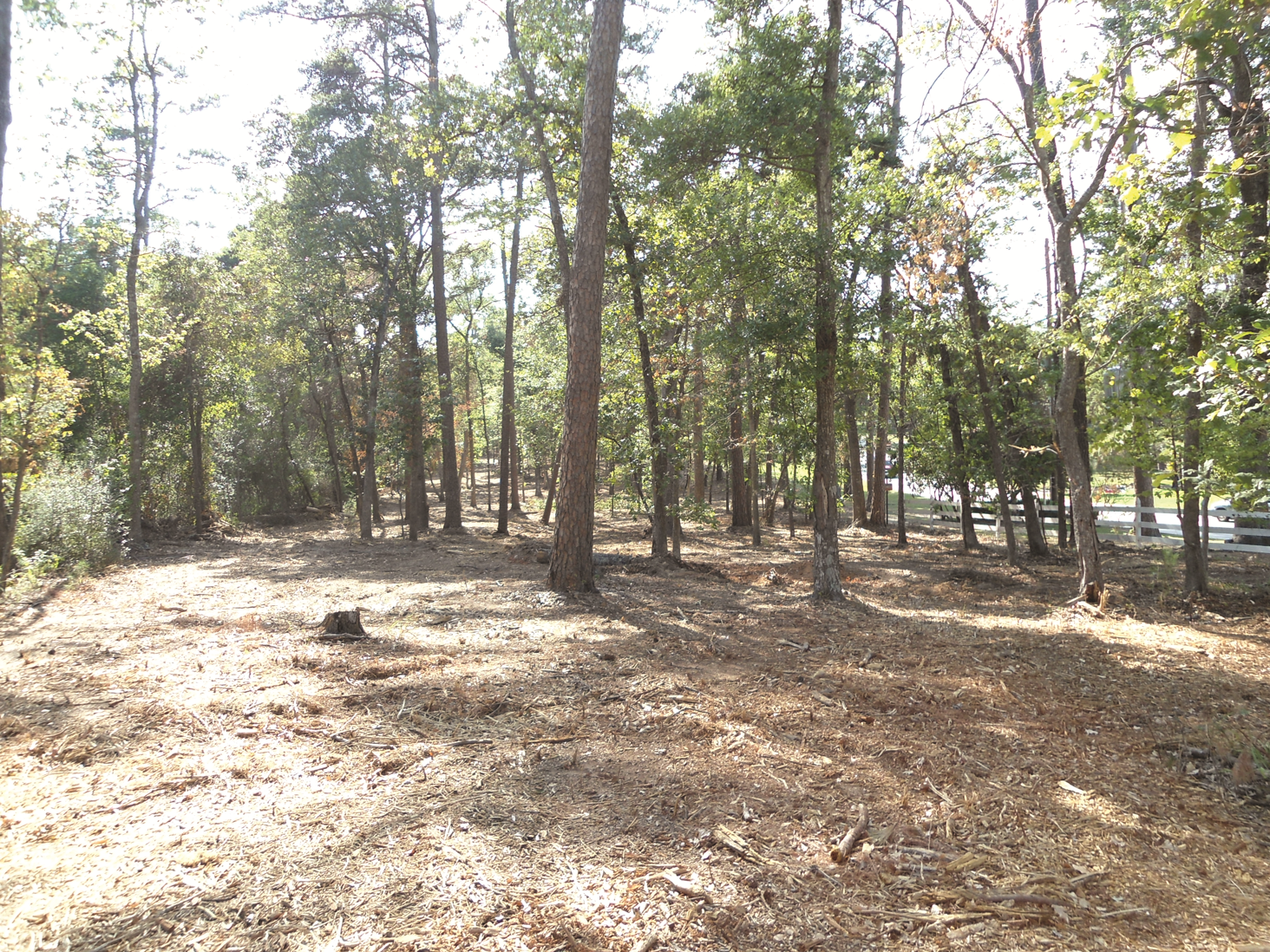 |
+ Maintaining Fuel Breaks
Regular maintenance of breaks increases their effectiveness in preventing wildfires.
The use of herbicides as a follow up treatment to mulching will help reduce the amount of weed sprouts.
Grazing is also an option to maintain a fuel break.
| 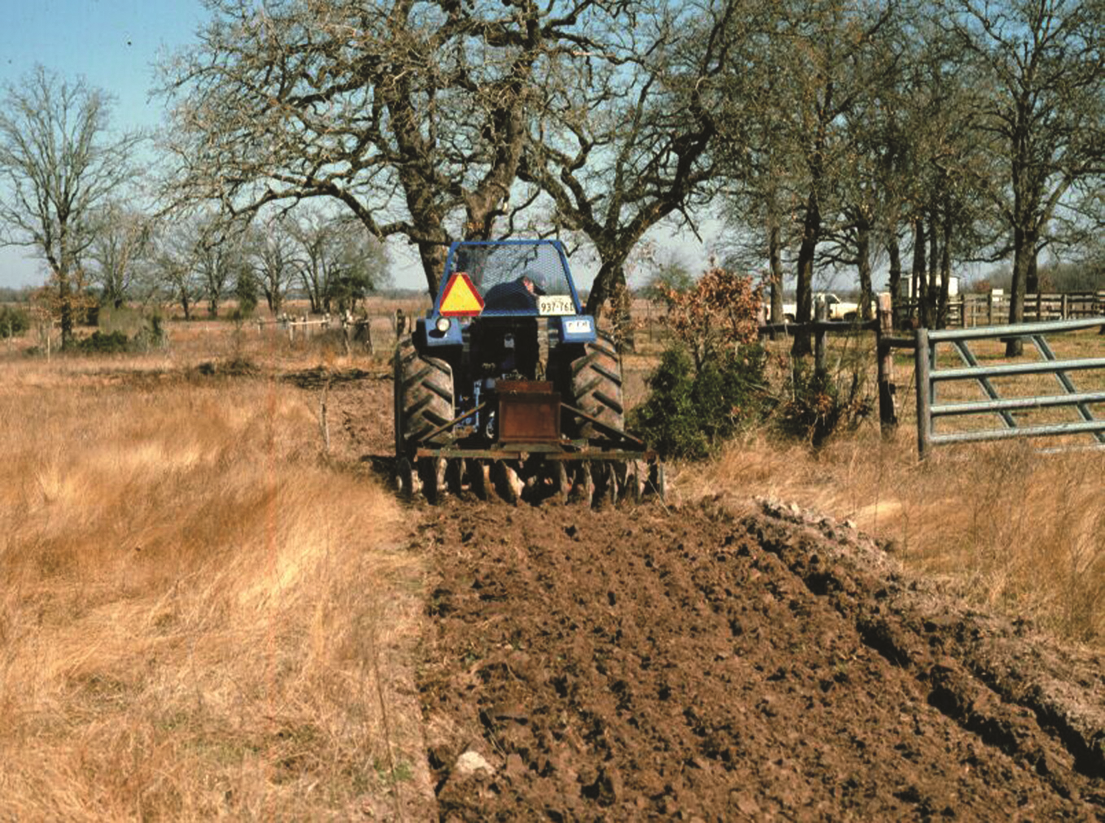 |